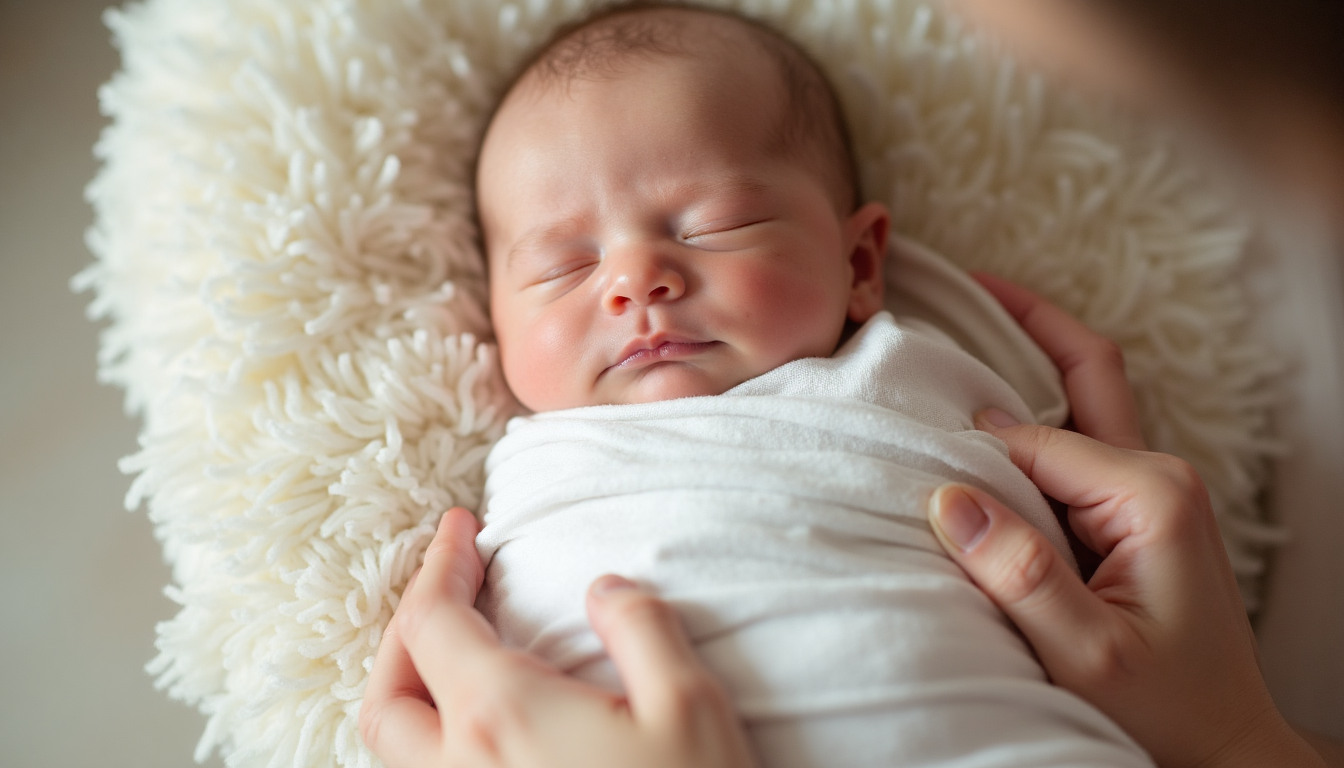The Swaddling Dilemma: What I Wish Someone Had Told Me

Let me start with a confession: I was terrified of swaddling my first baby.
I know, I know. It seems ridiculous now. But between the conflicting advice from my mother-in-law ("We never did that in my day!"), the scary articles about SIDS, and watching my husband wrap our newborn like he was preparing a burrito for takeout... well, let's just say I spent more than a few 3 AM moments googling "is swaddling safe" while my baby screamed in my arms.
If you're reading this with similar anxiety, take a breath. You're not alone, and honestly? The fact that you're researching this stuff means you're already doing great.
The Real Talk About What Swaddling Actually Does
Here's the thing nobody really explains clearly: swaddling isn't some magical baby hack that'll transform your little tornado into an angel. It's basically giving your newborn a gentle, snug hug that mimics what they felt in your womb for nine months.
Think about it – your baby just spent months in the coziest, most secure environment imaginable. Then suddenly they're out here in the big world where their own arms seem to attack their face randomly (thanks, Moro reflex). It's like going from a perfectly fitted wetsuit to swimming in an oversized hoodie.
The Moro reflex is this involuntary startle response where babies suddenly throw their arms out like they're falling. It happens during sleep too, which means your little one can literally wake themselves up by their own arm movements. It's as frustrating as it sounds, trust me.
When done correctly, swaddling can help your baby feel secure and sleep longer. The key phrase here being "when done correctly" – because like most parenting things, there's definitely a wrong way to do it.
Let's Talk Safety (Because I Know You're Worried)
I'm gonna be straight with you – there ARE risks to swaddling, and pretending otherwise doesn't help anyone. But here's the good news: most of these risks are totally avoidable if you follow some basic guidelines.
The Hip Thing: This was probably my biggest worry initially. If you wrap your baby's hips and legs too tightly, you can mess with their hip development. But the fix is simple – their legs need room to move up and out. Think "loose pants" not "sausage casing." Your baby should be able to bend their knees and move their hips freely.
Temperature Control: Babies can overheat easily when swaddled, especially if you're like me and tend to worry they're cold. Sometimes just a diaper under the swaddle is enough. I learned this the hard way after swaddling my daughter in full pajamas on a warm night. She woke up sweating and cranky, and I felt terrible.
The Rolling Milestone: Once your baby starts showing signs of rolling (usually around 2-4 months), it's time to transition away from swaddling. A swaddled baby who rolls onto their stomach can't use their arms to lift their head, which creates a breathing risk.
Sleep Position: Always, always put your swaddled baby on their back to sleep. I cannot stress this enough. The combination of stomach sleeping + swaddling significantly increases SIDS risk.
The Benefits (When You Get It Right)
Okay, so what's the payoff for all this careful wrapping? Honestly, it can be pretty amazing:
Better Sleep: Not just longer stretches, but deeper sleep too. My son went from waking every 45 minutes to sleeping 3-4 hour stretches once we got our swaddling technique down. Of course, there's a flip side – babies in deep sleep might not wake up as easily if something's wrong, which is why following safe sleep guidelines is so crucial.
Less Crying: When your baby isn't constantly startling themselves awake or getting frustrated by their own flailing limbs, they tend to be happier overall. It's not magic, but it definitely helped with our evening fussy periods.
Easier Soothing: There's actually some interesting science here – when you swaddle with arms across the chest (crossing the midline), it helps the right and left brain hemispheres communicate better, creating a natural calming response.
Safety in the Crib: A properly swaddled newborn can't wiggle into weird positions or get limbs stuck in crib railings. This gave me so much peace of mind during those early weeks when I was checking on them constantly.
My Biggest Mistakes (So You Don't Have To Make Them)
Let me save you some trial and error here:
Mistake #1: Trying to swaddle during awake time. Your baby NEEDS to move around, explore, and yes, even get frustrated with their own hands sometimes. That's how they learn about their body. Swaddling is for sleep and soothing, not 24/7 containment.
Mistake #2: Making it too tight around the chest. I was so focused on keeping arms secure that I didn't realize I was restricting breathing. You should be able to fit 2-3 fingers between the swaddle and your baby's chest.
Mistake #3: Giving up too quickly when baby seemed to "fight" the swaddle. Some babies do resist at first – it's new and different. But if they calm down once swaddled, that's usually a good sign.
Mistake #4: Using it as a cure-all. Swaddling helps with sleep and the startle reflex, but it's not gonna fix colic, reflux, or general newborn fussiness. I learned this when my daughter was going through a particularly rough patch and I kept thinking tighter swaddling would solve everything.
What About the Babies Who Hate It?
Real talk: not every baby loves being swaddled, and that's completely normal. My nephew would break out of any swaddle within minutes and seemed genuinely happier with his arms free. Some babies are just born ready to move around more.
If your baby consistently fights swaddling, cries more when swaddled, or seems uncomfortable, it might just not be their thing. You could try swaddling with one arm out, or look into sleep sacks as an alternative.
The Products That Actually Matter
I'm not gonna lie – I probably bought way too many different swaddling products trying to find "the one." Here's what I learned:
Simple muslin blankets work great if you master the technique. YouTube is your friend here – watch a few videos and practice on a stuffed animal first (seriously).
If you're struggling with traditional blankets, products like Halo SleepSacks or SwaddleMe wraps can be lifesavers. They're basically swaddling with velcro, which honestly saved my sanity during those middle-of-the-night diaper changes.
When Things Go Wrong
Sometimes despite your best efforts, swaddling just doesn't work out the way you hoped. Maybe your baby breaks out constantly, or seems more agitated when swaddled, or you're just too anxious about it to sleep yourself.
That's okay. Really.
I have friends who never swaddled and their babies slept fine. I have other friends who swaddled until 6 months (safely, with arms free once rolling started) and swear it saved their sanity. There's no one-size-fits-all solution in parenting, despite what Instagram might tell you.
Questions to Ask Yourself
Before you decide whether swaddling is right for your family, consider:
- Does your baby seem calmer when swaddled?
- Are you able to do it safely and consistently?
- Is it helping with sleep, or are you just doing it because you think you should?
- Are you comfortable with the technique, or does it stress you out?
Your stress levels matter too. A calm, confident parent is worth more than any sleep hack.
The Bottom Line
Swaddling can be a helpful tool in those early months, but it's not mandatory for good parenting. If it works for your family and you can do it safely, great. If it doesn't, that's fine too.
The most important things are: back sleeping, safe sleep environment, and trusting your instincts about what your baby needs. Everything else is just details.
And hey, if you're reading this article at 2 AM while your baby cries in the background – been there. You're doing better than you think, even when it doesn't feel like it. The newborn phase is intense but temporary, with or without swaddling.
What's your experience been with swaddling? I'd love to hear in the comments whether you're team swaddle, team arms-free, or still figuring it out. No judgment here – we're all just trying to get through those first few months with some semblance of sleep and sanity intact.
And please, if you have concerns about your baby's sleep or safety, don't hesitate to talk to your pediatrician. They've heard every question before and would much rather you ask than worry in silence.




